Historic Park Island Hotel Threatened With Demolition
The Park Island Hotel in Center City opened in 1900. The secluded, lakeside property offered guests nearly 3,000 square feet of space to relax on the main level alone–including a large dining room and a lounge at the back of the hotel that overlooked the lake. Twenty guest rooms were located upstairs. Some rooms had a private bathroom while others shared. The long dock featured a bandshell at the midway point. Bands and orchestras played in the bandshell on weekend evenings, drawing guests and locals to the lake.
As with so many other hotels from this era, the Park Island Hotel fell out of favor with travelers once automobiles became common and vacationers sought destinations farther north. The hotel was forced to close. More recently, the historic building served as a group home for adults with developmental disabilities. During that time, the aging building was only minimally maintained. When the maintenance costs became too high, and the building became unsafe for residents, it was abandoned.
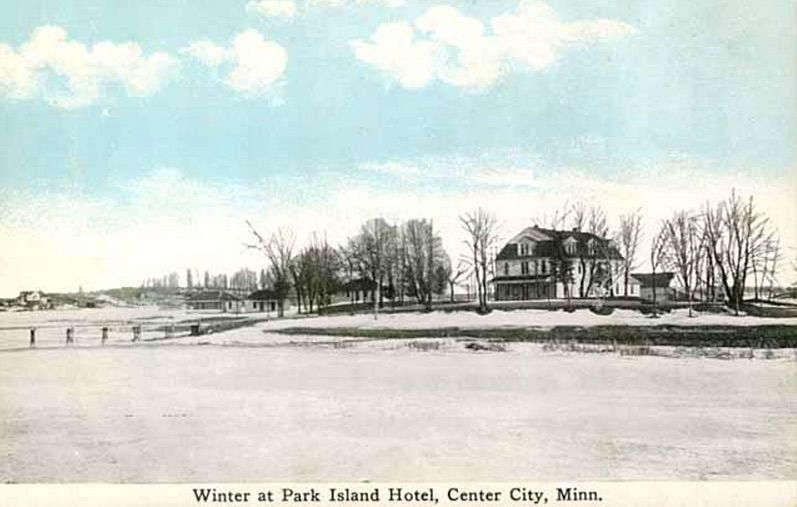
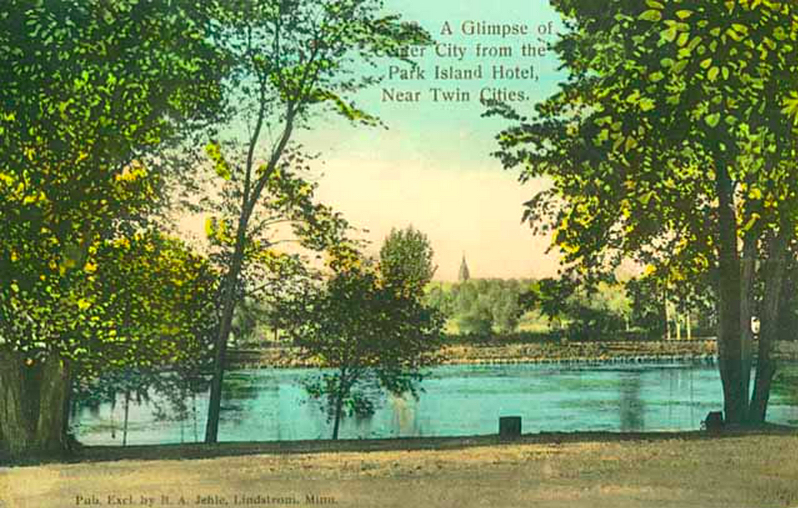
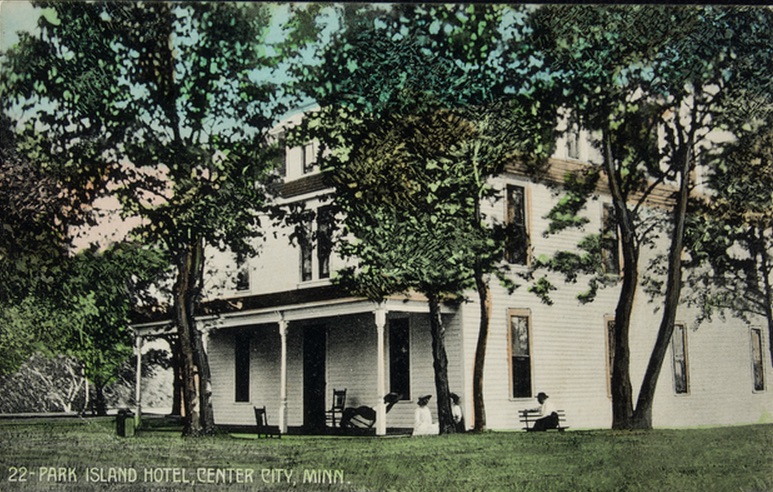
The building was then sold to its current owner who hoped to rehab the building. According to the Chisago County Press, the owner was hit hard by the recession and doesn’t have the money to rehab or demolish it at this time. The City Council is pushing for the historic building to be demolished and the land subdivided into smaller lots. However, they are also unable to come up with the money needed to raze the building and are currently considering taking out a loan to demolish the property.
Update 7/10/2015
Several people connected with the City of Center City have posted comments on Facebook about the Park Island Hotel. They are adamant that the city does not want to demolish this historic building, but they feel that there is no other option but to raze it at this point. It’s understandable. For as long as the property has been empty (2003), it has not been stabilized and secured. Rats, bats, and other critters wander in and out. Of course, rain and snow do too.
At the request of the city, Becklin & Whitney Building Engineers of Cambridge conducted a structural survey of the building. They found issues with the foundation, a deteriorating support beam, and the need for a new roof to be the most immediate concerns. For more than three years, the city’s requests to stabilize the building have been met with apathy and posturing from the owner, Larry Merhiy of Blaine. According to the Chisago County Press, Merhiy has said that he purchased the property in 2008 with the hope of restoring the building. He maintains that he was hit hard by the recession and is still unable to complete any repairs needed to stabilize the property. There are several reports in the city council minutes of Merhiy’s unmet promises and failure to comply with the city’s requests.
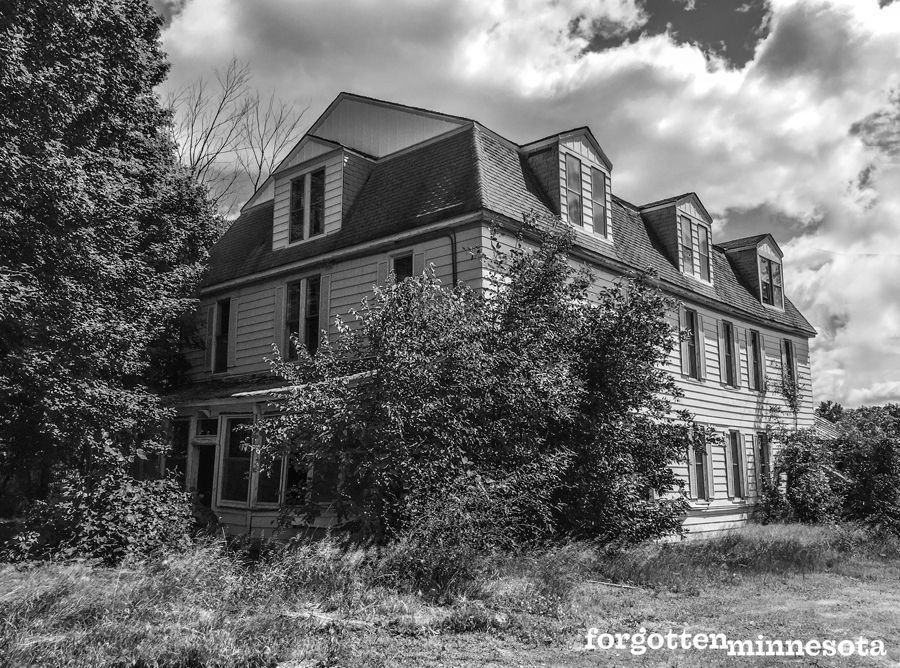
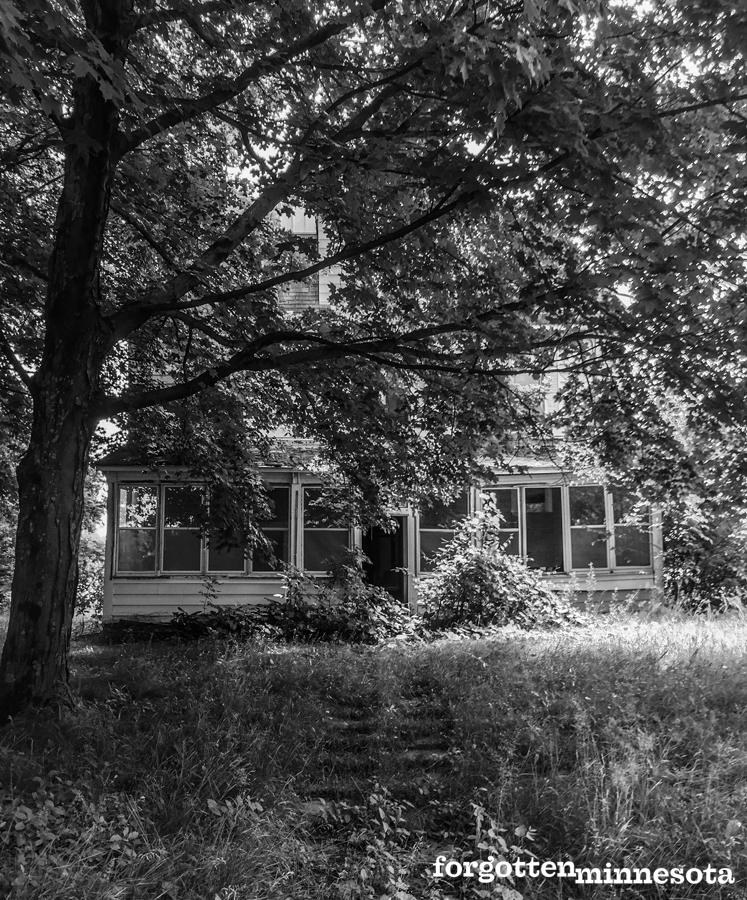
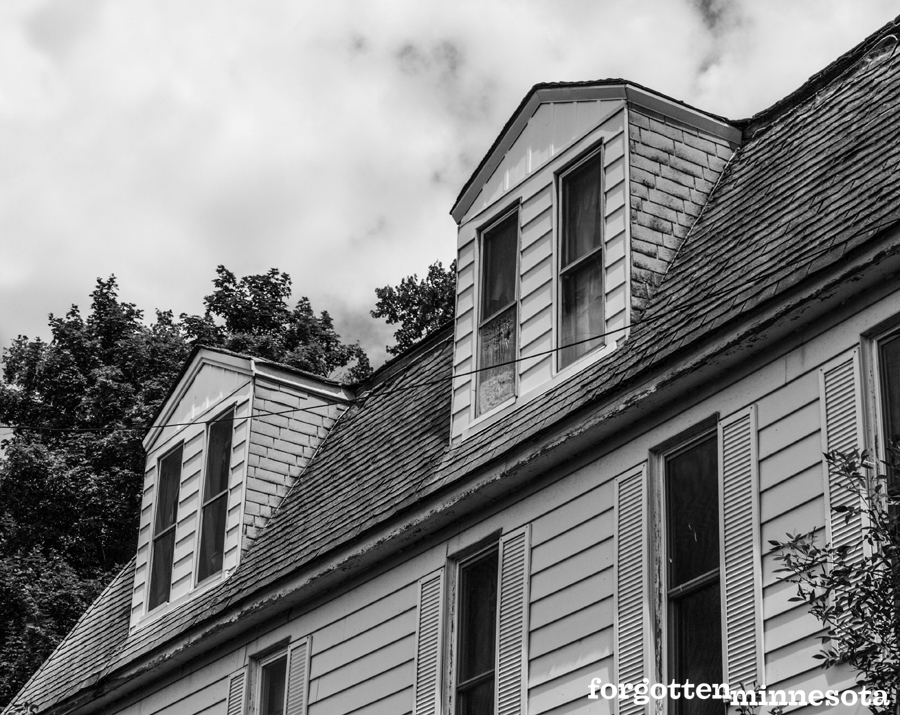
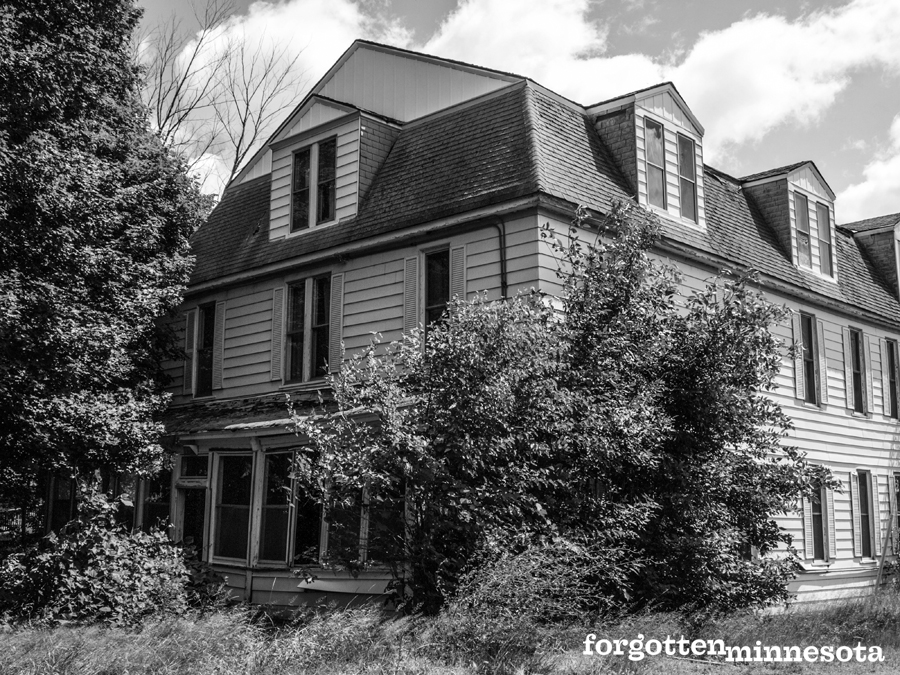
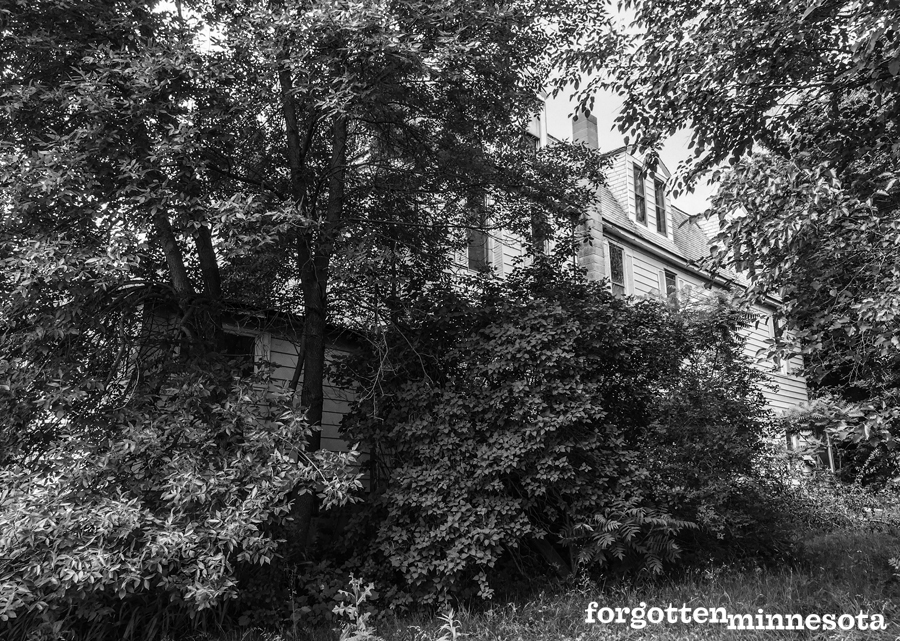
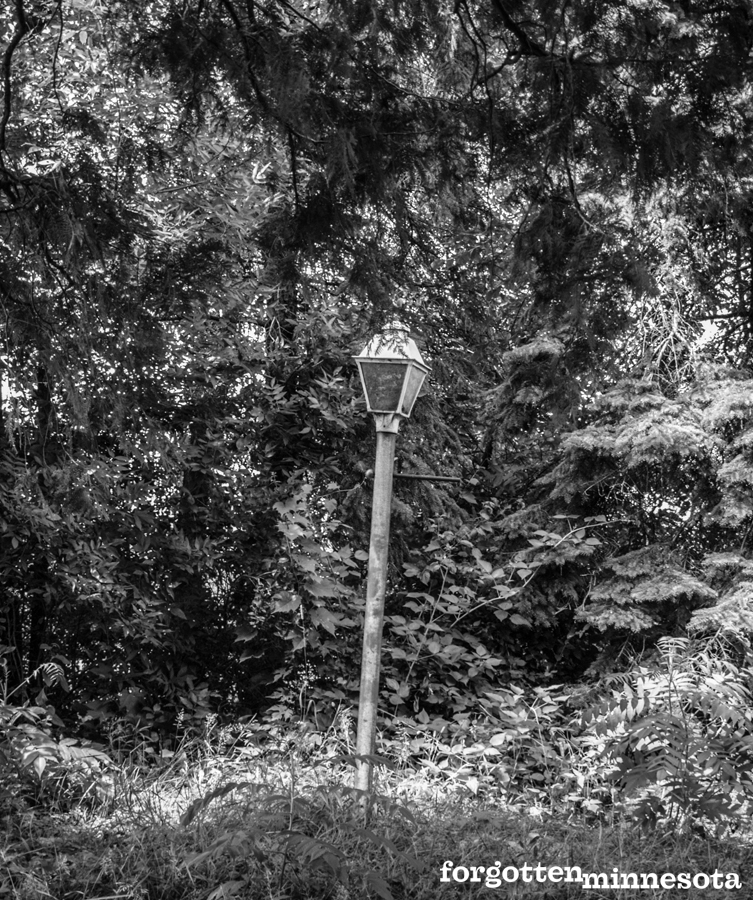
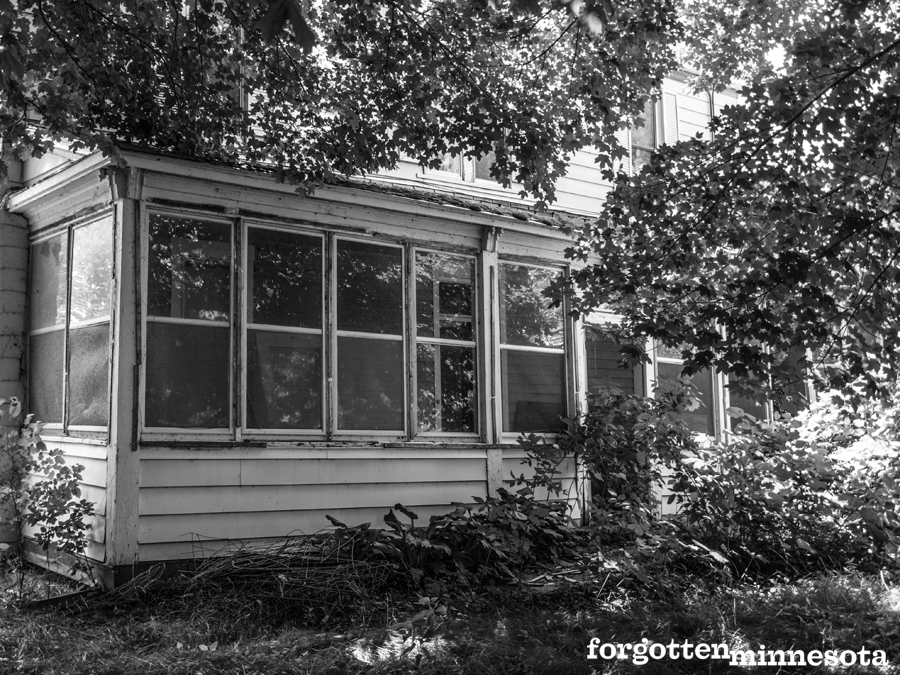
This neglect puts the city (and us) in the precarious situation we are in today. A new buyer must be found immediately, and the structural repairs completed quickly in order to save this building from becoming another piece of forgotten Minnesota history. At the time this article was published the property is listed for sale.
Admittedly, historic preservationists are a hopelessly optimistic group of people. Most of us don’t give up hope on a historic building until 90% of it is a pile of rubble. I have been asked several times over the past few days if the Park Island Hotel can really be saved in its current state. I say, it more than likely can. Will it be easy? Absolutely not. Preserving this historic building will be a project for people who thrive on a challenge. It will take a group of innovative thinkers, a community that doesn’t mind getting their hands dirty, and people who don’t take no for an answer to keep it standing.
So, what happens if those people can’t be found in time to save the Park Island Hotel? We document it. We learn from it. We prevent it from happening again. We become more aware of the historic properties around us and their value to our communities each time we lose another one that should have been saved.
Final Update
This property was demolished in 2016. As of 2021, the land remains empty.
